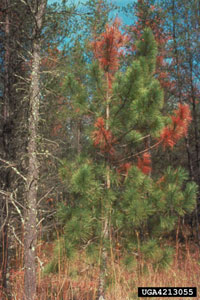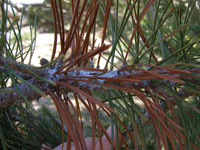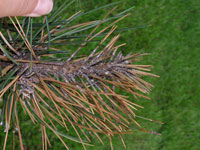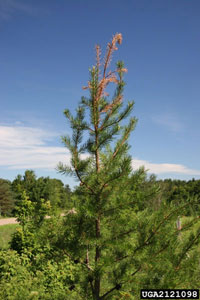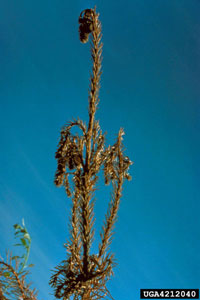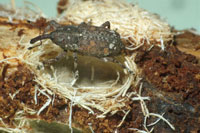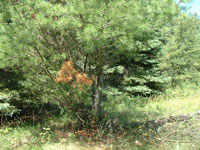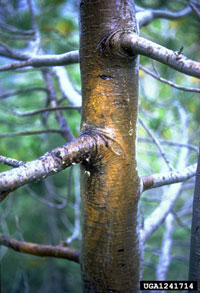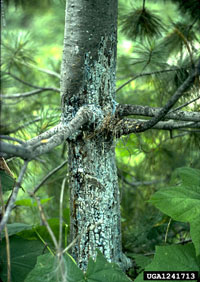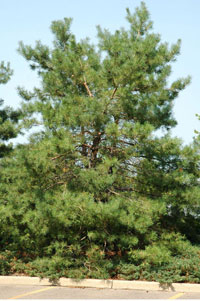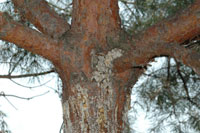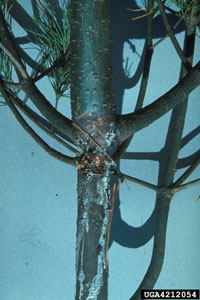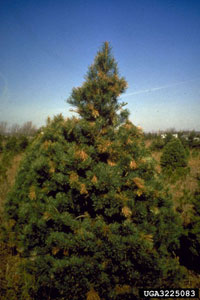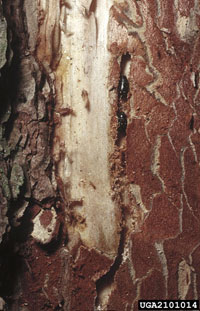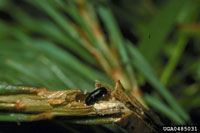Extension > Garden > Diagnose a problem > What's wrong with my plant? > Evergreen Trees and Shrubs > Pine > Dead branches or leader
Pine > Trunk/Branches > Dead branches or leader
1 of 5
Diplodia shoot blight
Diplodia pinea
- New needles are brown, short and often glued together with resin
- Cankers are resin coated flattened areas on branches
- Needles and branch beyond canker turn brown and dies
- Tiny, black, pimple-like fungal structures on dead needles and pine cones
- Infected shoots and dead branches occur throughout the tree but most commonly in lower canopy
- Cankers and dead needles can appear rapidly after wounding from hail, drought or other stress
- Olive to dark brown streaking in sapwood below cankers
- Common on Austrian, red and Scots pine
- More information on Diplodia shoot blight
2 of 5
White pine weevil
Pissodes strobi
- Terminal leader dead or dying, curled into a shepherd's crook
- Branches in whorls near the top may also wilt and die
- Repeated attacks can leave trees looking bushy
- Drops of sap from feeding wounds on terminal shoots in early spring
- Prefers Eastern white pine but will also infest jack pine and Norway and blue spruce
- Small, ¼ inch long, white, grub-like larvae feed under bark from June to August
- Adult weevils ¼ inch long, dark with tan and white mottling; has conspicuous snout
- More information on White pine weevil
3 of 5
White pine blister rust
Cronartium ribicola
- All needles on one or several branches die and turn completely reddish-orange
- Young cankers are elliptical, bark appears swollen and discolored yellowish orange
- Older cankers exude large amounts of white sticky resin and have cracked bark
- In early spring, orange-yellow blisters appear on the bark of cankers that are 2 or more years old
- In summer, yellow-orange sticky liquid droplets form in cankers 3 years or older
- Only white pine and other five needled pines can be infected
- More information on White pine blister rust
4 of 5
Zimmerman pine moth
Dioryctria zimmermani
- Dead terminal leader and shoots are common
- Larvae feed at branch whorls and a base of shoots
- Pitch mixed with reddish frass just below feeding sites
- Affected shoots turn brown and may break off
- Larvae are dark pinkish-green, about ¾ - 1 inch long
- More information on Zimmerman pine moth
5 of 5
Pine shoot beetle
Tomicus piniperda
- Dying, dead and broken shoots, particularly in the top half of the tree
- Adults tunnel into shoots which turn yellow to reddish-brown
- Attacks most pine species where cut stumps or logs are present
- Adults are shiny, black and about the size of a match head
- Larvae are white with a brown head and about ¼ inch long
- More information on Pine shoot beetle



